Do you have a question about the Cessna SKYLANE 182P and is the answer not in the manual?
Provides a basic overview of the handbook's purpose and content, including the material required by CAR Part 3.
Details on the engine, propeller, fuel, and oil specifications for the aircraft.
Defines terms, symbols, and abbreviations used throughout the manual for clarity.
Explains terms crucial for safe loading, center of gravity calculations, and operational limits.
Outlines the scope of Section 2, covering operating limitations, instrument markings, and basic placards.
Details crucial airspeed limitations and their operational significance.
Defines maximum takeoff and landing weights, and baggage compartment weight limits.
Specifies the acceptable forward and aft CG ranges for safe operation.
Details fuel capacity, usable fuel, and approved fuel grades.
Lists critical information displayed in the cockpit for safe operation.
Guides on coping with emergencies, emphasizing preflight checks and good judgment.
Provides operational checklists for engine failure scenarios.
Details procedures for emergency landings without engine power and precautionary landings.
Outlines actions for engine, electrical, or cabin fires.
Provides procedures for handling inadvertent icing encounters.
Overview of procedures for normal operation and optional systems.
Detailed checklist for pre-flight walk-around and system checks.
Step-by-step guide for starting the engine in various conditions.
Checklist of procedures to perform before initiating takeoff.
Procedures for normal and maximum performance takeoffs.
Guidelines and settings for maintaining cruise flight.
Procedures for normal, short field, and crosswind landings.
Explains the purpose of performance data charts for flight planning.
Provides performance data for takeoff distances under various conditions.
Presents performance data for cruise flight, including speed and fuel flow.
Provides performance data for landing distances under various conditions.
Details stall speeds at maximum weight for different CG positions and flap settings.
Describes how to establish basic empty weight and moment.
Step-by-step instructions for determining the aircraft's weight and CG.
Procedures for calculating weight and balance using graphs and envelopes.
A comprehensive list of Cessna equipment available for the aircraft.
Graphical representation of the aircraft's CG limits for safe operation.
Overview of the airplane and its systems.
Describes the construction of the fuselage, wings, and empennage.
Explanation of the conventional aileron, rudder, and elevator control systems.
Layout and function of cockpit instruments and controls.
Overview of the engine specifications and major accessories.
Description of fuel tanks, selector valve, strainer, and flow.
Overview of the aircraft's 14-volt DC electrical system.
Description of the stall warning unit and its operation.
Overview of audio control panel, microphone-headset, and static dischargers.
Covers factory-recommended procedures for ground handling, care, and servicing.
Details FAA required inspections and maintenance schedules.
General guidelines for taxiing, towing, and parking the aircraft.
Procedures for securing the airplane against wind damage.
Grade, capacity, and change intervals for engine oil.
Maintenance and inspection procedures for propeller blades.
Explains that this section covers optional systems and their descriptions.
Description, limitations, and emergency procedures for the ELT.
Description of the four-place oxygen system and its operation.
Description and operation of the Cessna 300 Communications Transceiver.
Description and operation of the Cessna 300 Nav/Com system.
Description and operation of the 720-channel Nav/Com system.
Description and operation of the Cessna 400 Automatic Direction Finder.
Description and operation of the transponder and optional altitude encoder.
Description and operation of the Cessna 200A Navomatic Autopilot.
Description and operation of the Cessna 300A Navomatic Autopilot.
Provides a basic overview of the handbook's purpose and content, including the material required by CAR Part 3.
Details on the engine, propeller, fuel, and oil specifications for the aircraft.
Defines terms, symbols, and abbreviations used throughout the manual for clarity.
Explains terms crucial for safe loading, center of gravity calculations, and operational limits.
Outlines the scope of Section 2, covering operating limitations, instrument markings, and basic placards.
Details crucial airspeed limitations and their operational significance.
Defines maximum takeoff and landing weights, and baggage compartment weight limits.
Specifies the acceptable forward and aft CG ranges for safe operation.
Details fuel capacity, usable fuel, and approved fuel grades.
Lists critical information displayed in the cockpit for safe operation.
Guides on coping with emergencies, emphasizing preflight checks and good judgment.
Provides operational checklists for engine failure scenarios.
Details procedures for emergency landings without engine power and precautionary landings.
Outlines actions for engine, electrical, or cabin fires.
Provides procedures for handling inadvertent icing encounters.
Overview of procedures for normal operation and optional systems.
Detailed checklist for pre-flight walk-around and system checks.
Step-by-step guide for starting the engine in various conditions.
Checklist of procedures to perform before initiating takeoff.
Procedures for normal and maximum performance takeoffs.
Guidelines and settings for maintaining cruise flight.
Procedures for normal, short field, and crosswind landings.
Explains the purpose of performance data charts for flight planning.
Provides performance data for takeoff distances under various conditions.
Presents performance data for cruise flight, including speed and fuel flow.
Provides performance data for landing distances under various conditions.
Details stall speeds at maximum weight for different CG positions and flap settings.
Describes how to establish basic empty weight and moment.
Step-by-step instructions for determining the aircraft's weight and CG.
Procedures for calculating weight and balance using graphs and envelopes.
A comprehensive list of Cessna equipment available for the aircraft.
Graphical representation of the aircraft's CG limits for safe operation.
Overview of the airplane and its systems.
Describes the construction of the fuselage, wings, and empennage.
Explanation of the conventional aileron, rudder, and elevator control systems.
Layout and function of cockpit instruments and controls.
Overview of the engine specifications and major accessories.
Description of fuel tanks, selector valve, strainer, and flow.
Overview of the aircraft's 14-volt DC electrical system.
Description of the stall warning unit and its operation.
Overview of audio control panel, microphone-headset, and static dischargers.
Covers factory-recommended procedures for ground handling, care, and servicing.
Details FAA required inspections and maintenance schedules.
General guidelines for taxiing, towing, and parking the aircraft.
Procedures for securing the airplane against wind damage.
Grade, capacity, and change intervals for engine oil.
Maintenance and inspection procedures for propeller blades.
Explains that this section covers optional systems and their descriptions.
Description, limitations, and emergency procedures for the ELT.
Description of the four-place oxygen system and its operation.
Description and operation of the Cessna 300 Communications Transceiver.
Description and operation of the Cessna 300 Nav/Com system.
Description and operation of the 720-channel Nav/Com system.
Description and operation of the Cessna 400 Automatic Direction Finder.
Description and operation of the transponder and optional altitude encoder.
Description and operation of the Cessna 200A Navomatic Autopilot.
Description and operation of the Cessna 300A Navomatic Autopilot.
| Manufacturer | Cessna |
|---|---|
| Horsepower | 230 hp |
| Maximum Takeoff Weight | 2, 950 lb (1, 338 kg) |
| Crew | 1 |
| Capacity | 3 passengers |
| Model | 182P |
| Wingspan | 36 ft (11 m) |
| Cruise Speed | 145 knots |
| Wing area | 174 sq ft |
| Powerplant | Lycoming O-360 |
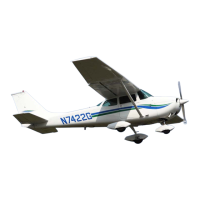
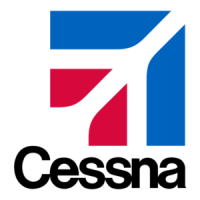
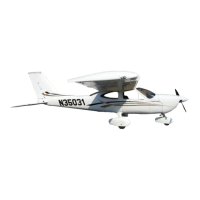
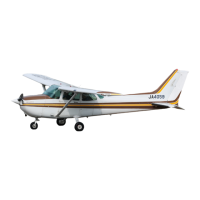
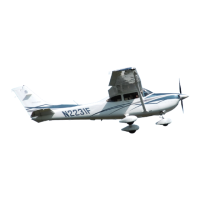


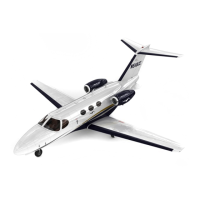
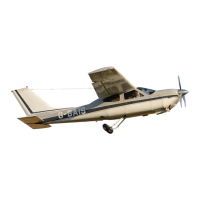



